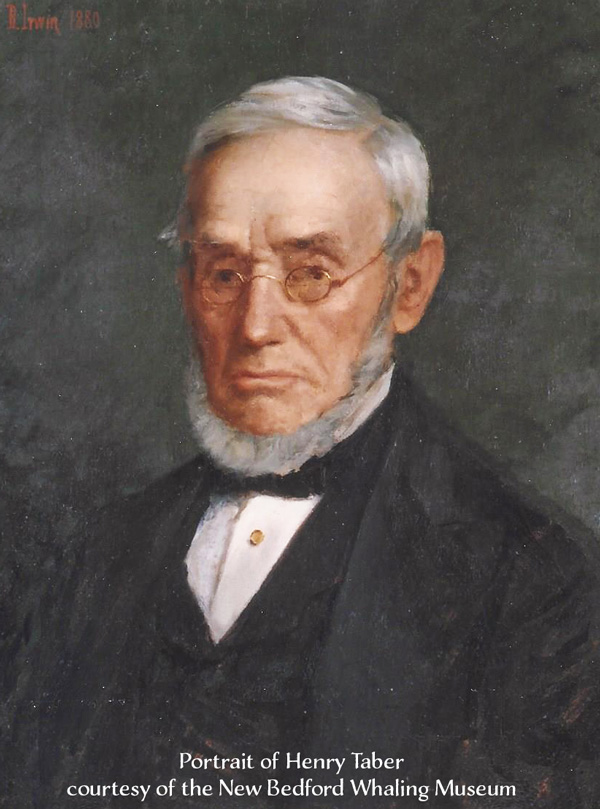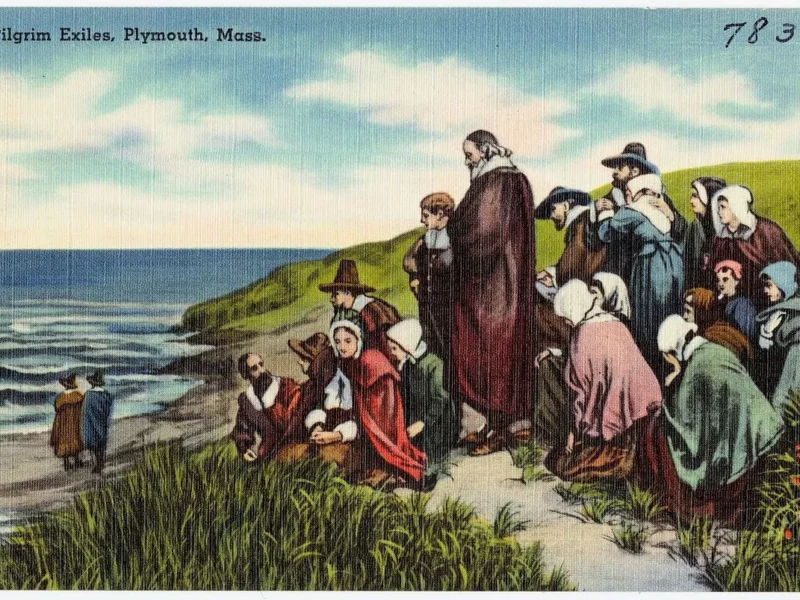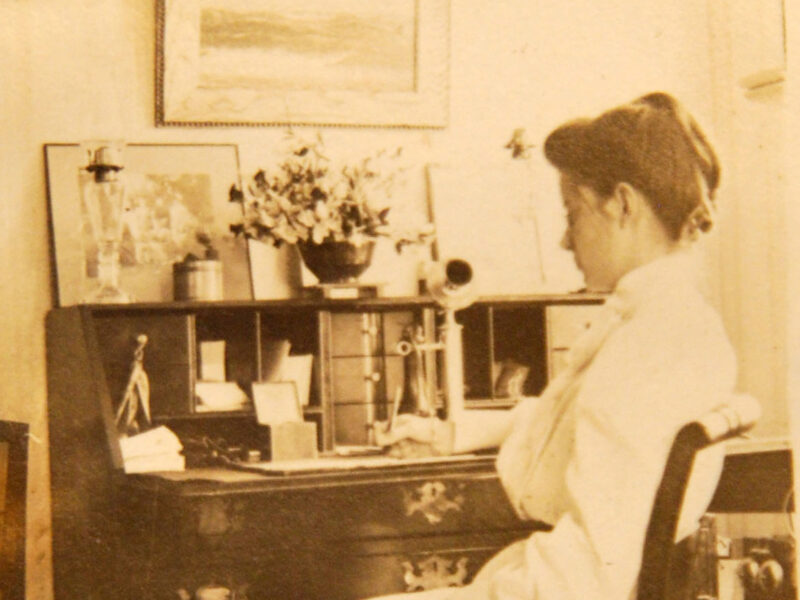February 2022
Version 2 (Revised March 5, 2023)
Dear Grandpa Henry,
Please excuse the informality—I write from the 21st century where life is much less formal. For some years, I have had a small photograph of the wonderful oil portrait of you near me and wished so often we could speak. As I explore more about our extended family, I’ve been given an exercise that suggests I write to someone with whom I cannot speak. So, I took up the challenge. Let me introduce myself: I am your 3rd great granddaughter (you to Abby, to Sarah, to Constance, to my mother Sally). After retiring from full-time employment (higher education administrator and archaeologist in prehistoric Italy), I have taken up studying our rich family history—both archaeology and family history offer ways to reconstruct parts of the past. Your story has always fascinated me, and you, born in 1795 and living until 1892, are right in the middle of those ancestors who arrived in North America in the 17th century and those of us in the 21st century. From the 17th century I know of eight male ancestors who arrived on the Mayflower (in addition to two daughters and three wives) as well as another approximately 30 men—and their wives and children—I am still sorting this out. This last group includes our common direct ancestor Philip Taber (1604-1692) who arrived in 1633.
Despite the fact that you and I are directly descended from Philip Taber, we have many other ancestors connected to Philip and as well as to others who arrived in the 17th century. And so I’ll turn to a brief review of some 17th c. settlers and their relationships to our extended family. More will be found in Lineages.
Our ancestor Philip married Lydia Masters, daughter of John Masters and Jane Cox, my 10th great grandparents, both born in Tiverton, Devon, England, (he in 1581, she in 1585). They were married by 1639 in North America. The echo of Tiverton reverberates in my ear since of course they lived near what would become Tiverton, R.I. [1,2]
Your and my ancestors who arrived in the 17th century, in addition to Philip, include Francis Cooke who with his son John Cooke (my 9th and 8th great grandfathers) were on the Mayflower. Francis’s wife followed, traveling on the Anne with three unnamed children but presumed to be Jane, Elizabeth, and Jacob. Elizabeth is believed to have died before the 1627 Division of Cattle that did not name her. Daughters Hester and Mary were born in Plymouth and Mary Cooke would marry John Tompson, and their daughter Mary Tomson would marry Thomas Taber, your 3rd great grandfather, son of Philip Taber who was the 1st Taber to arrive in North America, arriving in R.I. in 1629. John Thompson (or Tomson) arrived in Boston in 1635 in mid-summer on the Elizabeth and Anne.
What follows is a brief discussion of some of our ancestors connected to you and thus me. While this story is relevant to our extended family beginning in the 17th c., it also offers a concrete example of many extended families in this same period, who produced their own tributaries in southeastern Massachusetts or in other parts of eastern North America. And this example may inspire readers to delve into such a consideration of the early years of their own extended families.
- Mary, a daughter of Francis Cooke (Mayflower)—your 4th and my 9th great grandfather—was born in Plymouth in 1627, and married John Tomson in 1645. Their daughter Mary Tomson (b. 1650) married Thomas Taber who would be your 3rd and my 8th great grandfather. (More on Francis Cooke’s life and his descendants appears in my letter to him and his nephew Philip Delano.)
- John Masters, your 5th and my 10th great grandfather, married Jane Cox (both born in England and married there).
- From The Winthrop Fleet [3, p. 460] we read a letter of John Master’s (14 March 1630/1) to Lady Barrington in which he noted that she and her family had “desired me to write of this country, and said you would believe what I should write;” he also stated that “Sir Richard Saltonstall hath put me in place to oversee his great family, with his worth son [NEHGR 91:68-69; Letters from NE 83-85]. These comments, and the entire tenor of the letter, indicate that Masters had in the past been in service to one or more of the Puritan gentry families in Essex.
- One daughter of John Masters and Jane Cox, Lydia, married Philp Taber, your 4th and my 9th great grandfather. Philip and Lydia’s son, Thomas Taber, as mentioned earlier, married Mary Thomson (your 3rd and my 8th great grandparents) and their son Joseph Taber married Elizabeth Spooner and their son Benjamin Taber (1706-182) was your great grandfather and my 6th great grandfather. This Benjamin Taber married Susanna Lewis, daughter of John Lewis and Elizabeth Doty, granddaughter of Mayflower passenger, Edward Doty, bringing the Doty line into yours and mine. Their son, Benjamin Taber (1733-1820), married Hannah Gardner (daughter of Barnabas Gardner and Mary Wheeler).
- Their son Benjamin Taber (1766-1846) was your father and my 4th great grandfather. He married Rhobe Aikin who descended from David Akin from Aberdeen, Scotland who was one of your 3rd and my 8th great grandfathers.
- John Peckham (b. 1595 in Sussex, England) in 1638 in R.I. married Marie Clarke (b. 1607 in Suffolk, England). Their daughter Rebecca married John Spooner (son of William Spooner, b. 1622, England) and Elizabeth Partridge (b. 1625, Essex, England). They married in Essex England, 1646. Their daughter, Elizabeth Spooner (1683-1734), married Joseph Taber (1679-1752), your 2nd and my 7th great grandfather. A grandson of John Peckham (b. 1595), John Peckham (1671-1722) was born in Newport and died in Little Compton; an excerpt from his will is available in [4: 488]. So, part of this family moved from Newport to Little Compton, as did part of the Hunt family, another Newport to Little Compton transition. John Hunt was born in Little Compton in 1813 and as young man moved New Bedford where he accepted a position as clerk with you, Henry. Soon you admitted him to partnership along with your first-born son, William Gordon Taber, changing the firm’s name to Henry Taber & Co. John first married Sarah Marsh Gordon, whose father, Thomas Pope Gordon, was a brother of your first and second wives. Thomas Pope Gordon’s lineage traces back to Thomas Pope (1612-1683(/?) and his descendants trace down through Seth, John, Thomas, and Abigail who was the second wife of William Gordon (my fourth great grandparents). Two of their daughters, first Abigail, and a year after her death, her sister Sally were your wives.
- Returning to John Hunt, we know that his first wife, Sarah Marsh Gordon, died of consumption in 1847 and he subsequently married Abigail Taber, your older daughter. John Hunt’s daughter with Abigail Taber was Sarah Gordon Hunt, carrying forward the married name of John’s first wife. Your granddaughter, Sarah Gordon Hunt, married Robert Snow. Sarah Gordon Hunt Snow, known in the family by the initials SHS, was my great grandmother.
The outlines of these complex and intertwining lives of the early settlers of eastern Massachusetts, return us to my image of numerous tributaries of our ancestors in southeastern Massachusetts, coming together, joining, and then moving on, with future generations of these families rejoining, just as streams over time rejoin the tributaries from which they were born.
Specifics of You and Your Family, Henry
Now is a good time to change our discussion from ancestors to your approach to religion, something that has long fascinated me—the family overall moved from Congregational and Quakers to primarily (but not exclusively) Unitarian and that was the church I went to as a child. Your granddaughter, Sarah Hunt Snow, an important family historian, left notes of stories about how you approached the demand that Abby give up the gold watch as well as the demand—not followed—that you disavow marrying out of Meeting two Methodist sisters, the second a year after your first wife died. You refused to disavow your marriages to the wives and were subsequently read out of Meeting, yet you and your wife continued to attend services in the Methodist church and the Quaker Meeting. And you continued to financially support both places of worship. The letter I wrote to Sarah includes a discussion of the Gordon family’s entrance to North America. Alexander Gordon came from Aberdeen, Scotland. You married two daughters of his descendant William Gordon, a Revolutionary War hero. And your mother, who died when you were only 6 years old, descended from John Akin (Aiken) who arrived in the 17th century from Aberdeen as well. Did Alexander Gordon and John Akin know each other in Aberdeen? Did you know the connection of early Scottish origins of your wives and your mother? I wish I could hear from you.
Your daughter Abby, as you recall, compiled a carte de visite album of kin and neighbors around the mid-1860s with the backdrop of the Civil War and the fascinating business developments of that time—many of which involved you [5]. The people included in the album pointed to and included earlier development of the packet boats of which you owned and commanded a number, as well as the railroad that Grinnell urged for the area so better movement of goods could happen—furthering the development of industry in the area including the banking and insurance industries in New Bedford. Additionally, you had a hand, critically, in the development of steel, under the efforts of Zoheth Durfee, who while not a relative was frequently in discussions with you, Grinnell, and probably James Arnold. Zoheth’s carte de visite, you remember, is in the album—Abby gave him the sobriquet The Learned Blacksmith. You, Grinnell, and Arnold are also in the Abby’s album. With all these efforts and more, New Bedford contributed both financial and intellectual capital to the development of the United States. And you were one of a number of major players.
Abby read this 1860s photo album to her granddaughter, my great aunt Agatha Snow, in the late 1880s/early 1890s. Decades later, probably in 1942, Agatha penciled in the album the stories Abby told her about the people and neighbors whose cartes de visite are in the album. When the album was entrusted to me for study my cousin said she had thought to erase these pencil comments—they are much of the richness of this album today (now in the New Bedford Whaling Museum) and I indicated how pleased I was that they were not erased. Agatha, penciling in Abby’s comments, included the fortuitous mention of her niece Deborah Snow Simonds who, as Deborah Snow, married Simonds in September 1941, and so we now know that Agatha made these notes after the marriage date and more than likely after the deaths of her mother, Sarah Hunt Snow, and Agatha’s sister, Edith Snow, in the spring of 1942—the marriage date provides what archaeologists call a terminus post quem, or ‘point after which.’ I studied the carte de visite album and the people portrayed, their neighbors, and the roles they played in 19th century New Bedford. Although you know all of this history, my studies present local history and may be considered one example of petite histoire—the account of specific households and neighborhoods, reminding us of the continuing importance of both family and neighborhoods, real or virtual.
Agatha with her artistic brilliance left us a small sketch book created during her trip to Europe (with two Hathaway cousins, Margaret and Sylvia, and Elizabeth Hussey) in the spring of 1912. The travel group left the New York harbor two days after the sinking of the Titanic, before the surviving passengers, rescued by the Carpathia, were even back in the New York harbor. The sketchbook and my study of it [6] show us what these travelers saw in that very interesting time and allow us a peek of Europe shortly before the outbreak of WWI. Agatha’s caricatures and cryptic comments also provided some interesting puzzles to solve.
Henry, my working title of the final major work on which I am embarking is From Pilgrims to Abolitionists and Beyond, Letters to My Ancestors. We know who the ‘pilgrims’ were and the 19th century Abolitionists, a group to which you, Loum Snow, Humphrey Hathaway Swift, and many others belonged. The ‘Beyond’ in this instance starts with Horatio Hathaway (1831-1898), directly descended from Arthur Hathaway (my 8th great grandfather), who with his son arrived from England around 1630. Horatio, as you recall, was a China trader and whaler in the Pacific and founded the Hathaway Manufacturing Company in 1888. One of his initial investors was Hetty Green who contributed an initial investment of $25,000.
Horatio’s group of mills was the not the first in our extended family, for those we must turn to Loammi/Loum Snow (1779-1823), known well as the captain of the ship the Ann Alexander when he met with the English fleet who were repairing damages a few days after the Battle of Trafalgar, October 21, 1805. Snow sold lumber for repairs to the battered ship; the lumber, personally owned by Snow, on the Ann Alexander. The ship supplied flour and apples they had on board as well. Captain Snow and the Ann Alexander soon moved on to the straits of Gibraltar where they came upon the new 74-gun frigate United States and gave them the news of the death of Lord Nelson [7].
Some years later, in 1813, Capt. Snow, along with his brother-in-law, Jireh Swift (1773-1857) and Joseph Whelden (1769-1854), half-brother of Snow, built in Acushnet one of the first cotton mills in Massachusetts. A photograph of the walls is available [8, p.62]. And we note that Horatio Hathaway and his mills, developed under the name of the Hathaway Manufacturing Company, follows the extended family traditions of China trading, whaling, shipping, and manufacturing.
Hathaway Manufacturing Company survived decades beyond Horatio’s death and merged in 1955 with the Berkshire Fine Spinning Associates (Adams, MA) and became known as Berkshire Hathaway Mfg. By the 1960s, Berkshire Hathaway Mfg. had declined to seven plants and 6,000 employees, but still annually produced one quarter of a billion yards of material that sold for more than $60 million. The assets, and a sizable amount of cash on the balance sheet, caught the eye of Warren Buffett, an up-and-coming but then little-known investor from Omaha, Nebraska.
Through his investment firm, Buffett Partnership Limited, Buffett started buying stock in Berkshire Hathaway at $7.60 a share. He eventually paid an average of $14.86 a share, or a total of $14 million, and took control of the company on May 10, 1965 [9]. And soon Berkshire Hathaway Investments was born and continues to flourish in the 21st century.
Henry, we are part of an extended family whose impact stretches from the early 17th century to the 21st century. I only wish you and I could meet to discuss the family and their adventures as well as the centuries of their contributions to the United States and the world. In closing, I want you to know that almost every day I am delighted to wear the lovely gold bracelet you gave Sally on the occasion of your 50th wedding anniversary [10].
Citations
[1] From Wikipedia: https://en.wikipedia.org/wiki/Tiverton,_Rhode_Island
Tiverton was incorporated by English colonists in 1694 within Bristol County in the Province of Massachusetts Bay. In 1746, in the final settlement of a long colonial boundary dispute between Rhode Island and Massachusetts, Tiverton—together with its fellow towns along the eastern shore of Narragansett Bay, Barrington, Bristol and Little Compton, and the town of Cumberland, to the north of Providence—were annexed to Rhode Island by Royal Decree. Tiverton was incorporated as a town in 1747. Until that year, Tiverton also controlled the area of East Freetown, Massachusetts, as an outpost. The boundary settlement of 1746 had put East Freetown in Massachusetts, and in 1747 it was purchased by Freetown.
[2] Anderson, Robert Charles, The Great Migration Begins, Immigrants to New England 1620-1633, Vol III:1793-94.
“Many sources state that Philip Tabor died in Tiverton, but he apparently died in 1672 or soon after, at a time when Tiverton had not yet been settled … the confusion arises since some descendants of Philip Tabor did reside in Tiverton.”
[3] Anderson, Robert Charles, The Winthrop Fleet, Massachusetts Bay Company Immigrants to New England 1629-1630, Great Migration Study Project, New England Genealogical Society, Boston 2012.
[4] Little Compton Families, From Records Compiled by Benjamin Franklin Wilbour, Little Compton Historical Society, 1967.
[5] Lukesh, Susan Snow, Frozen in Time, an early carte de visite album from New Bedford, Massachusetts, Second Edition, 2021; https://agathasnowabroad.com.
[6] Lukesh, Susan Snow, Agatha! Agatha Snow Abroad: A Sketch Book from her 1912 European Tour, 2020; https://susanslukeshllcentury.com/frozen-in-time/
[7] Representative men and old families of southeastern Massachusetts …, J.H. Beers & Co. Volume 3: pp 1437-1440
[8] Howland, Franklyn, A history of the town of Acushnet, Bristol county, state of Massachusetts, Nabu Press (2010).
[9] From Wikipedia: https://en.wikipedia.org/wiki/Warren_Buffett.
[10] Lukesh, Susan Snow, “Starting with a Bracelet and a Family Tree: How Family Artifacts Inspired and Informed My Genealogical Search,” American Ancestors, Summer 2013: 44-46.



